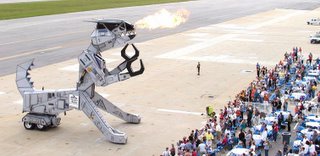
Slightly off topic, but not too much I hope.
<--- Mariner 10 photo of Merc
I am interested in astronomy. In the early 1960's I helped my dad build a 6-inch reflecting telescope, which I still have. At one point I knew many of the constellations and stars in them. I remember fewer names now because I've not studied it much lately, but I'm still pretty good at identifying winter sky constellations and most of the circumpolar stuff.
Anyway, I can identify Mars, Jupiter, Venus, and Saturn (usually) when I see them. But I've never seen Mercury. I've looked often, but no luck. This might be the time to try.
Mercury is bright, but it's always close to the sun, never rising or setting more than an hour or so before or after it. So, without both a long clear horizon and favorable celestial geometry, you can't see it; and I never have.
I came across this post on the NASA.gov websitewhen another reader sent a post on a related topic. It's cloudy tonight, but I'm checking it out the next opportunity I get. This is from NASA.gov's website.
It's not every day you get to see a shrinking planet. Today could be the day. Step outside this evening at sunset and look west toward the glow of the setting sun. As the sky fades to black, a bright planet will emerge. It's Mercury, first planet from the sun, also known as the "Incredible Shrinking Planet."
"This is only the second time in my life I've seen Mercury," says sky watcher Jeffrey Beall who snapped this picture looking west from his balcony in Denver, Colorado:

Above: Mercury on Feb. 13, 2006. Mercury is the bright "star" just above the mountain ridge, rivaling the city lights. Credit: Jeffrey Beall.
Mercury is elusive because it spends most of its time hidden by the glare of the sun. This week is different. From now until about March 1st, Mercury moves out of the glare and into plain view. It's not that Mercury is genuinely farther from the sun. It just looks that way because of the Earth-sun-Mercury geometry in late February. A picture is worth a thousand words
Friday, Feb. 24th, is the best day to look (sky map); that's the date of greatest elongation or separation from the sun. Other dates of note are Feb 28th (sky map) and March 1st (sky map) when the crescent moon glides by Mercury—very pretty.
Readers are invited to respond with news of their own Mercury sitings .





























